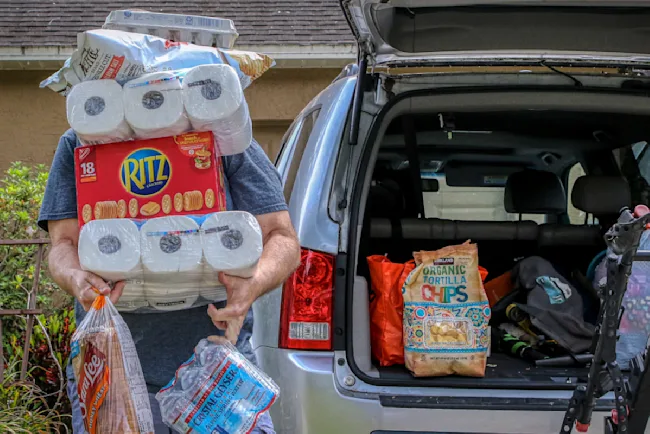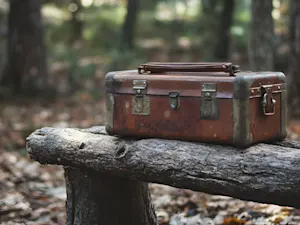
Everest Hiker Left for Dead, Found Alive
Mount Everest, the world's tallest mountain, is a place where the boundary between life and death is perilously thin. At nearly 29,000 feet, the infamous "death zone" challenges even the most seasoned climbers with its brutal conditions. In 2006, an extraordinary event unfolded on Everest that continues to captivate adventurers and armchair explorers alike: Australian climber Lincoln Hall was mistakenly presumed dead and left exposed on the mountain, only to be found alive the next morning by a team of climbers who abandoned their summit bid to save him. This remarkable story offers a gripping glimpse into the perils of high-altitude mountaineering, the ethics of rescue, and the sheer will to survive.
Left for Dead in the Death Zone
Lincoln Hall was no stranger to Everest. A veteran mountaineer and author, Hall had been part of the first Australian expedition to climb Everest in 1984 and had summited the peak on his second attempt in 2006. But during his descent on May 25, 2006, Hall fell seriously ill, suffering from altitude sickness — likely cerebral edema — that left him confused and hallucinating. His Sherpa guides tried to revive him for hours, but as night fell and oxygen supplies dwindled, the expedition leader, Alexander Abramov, ordered them to leave Hall behind, believing he was dead. They stripped him of his gear, including gloves and hat, and left him sitting on a narrow ridge at about 28,000 feet, exposed to freezing temperatures.
The grim news was relayed to Hall's family the next morning, confirming his death.
A Chance Encounter and a Change of Plans
Later that same day, a team of climbers making a summit attempt came across Hall in a state that defied belief. The group consisted of American climber Daniel Mazur, Canadian climber Andrew Brash, British climber Myles Osborne, and Nepali Sherpa Jangbu Sherpa. They found Hall sitting cross-legged on the ridge, his down suit unzipped, arms bare, without gloves, hat, goggles, or oxygen. Despite his frostbitten fingers and hallucinations, Hall was conscious and able to communicate. Mazur and his team were stunned but immediately recognized the urgency of the situation. They abandoned their summit attempt without hesitation, understanding that leaving Hall behind would be unthinkable.
Mazur described Hall's condition as fragile — his fingers looked waxy and yellow from frostbite, and he was disoriented, at one point believing he was on a boat. The rescuers gave him oxygen, water, and snacks, helping him regain some lucidity. They also contacted base camp to alert them that Hall was alive, setting in motion a larger rescue effort.
The Ethics and Risks of High-Altitude Rescue
Hall's rescue was unprecedented in scale and complexity. A team of 12 Sherpa guides was dispatched from base camp to assist in bringing him down safely. The rescue team included Ongshu Sherpa, Nima Wangde Sherpa, Passang Sherpa, Furba Rushakj Sherpa, Dawa Tenzing Sherpa, Dorjee Sherpa, Mingma Sherpa, Mingma Dorjee Sherpa, Pemba Sherpa, Pemba Nuru Sherpa, Passang Gaylgen Sherpa, and Lakcha Sherpa. The operation was fraught with risk — Mazur and his team had to forgo their own summit dreams, and the Sherpas faced the daunting task of navigating the treacherous death zone while carrying a severely injured climber. The incident highlighted the ethical dilemmas climbers face on Everest: when to push for the summit and when to prioritize human life, even at great personal cost.
This event also drew comparisons to the tragic case of British climber David Sharp, who died on Everest in 2006 after other climbers passed him by, assuming he was beyond help. Unlike Sharp, Hall was conscious and mobile, factors that made his rescue possible. The incident sparked debate about the responsibilities climbers have toward one another in such extreme environments and the limits of rescue efforts at high altitude.
Surviving the Night and the Aftermath
Hall's survival through the night at 8,700 meters without proper gear is nothing short of miraculous. The death zone is notorious for its lack of oxygen, extreme cold, and unpredictable weather — conditions that typically prove fatal to those left exposed. Hall's ability to endure these conditions, despite severe frostbite and cerebral edema, speaks to his resilience and perhaps a bit of luck.
After being rescued, Hall was treated at Everest's Advanced Base Camp and later in a military hospital near Delhi. He lost the tips of several fingers and a toe to frostbite but made a full recovery. Hall went on to share his story widely, authoring books and speaking about his experience, inspiring climbers and non-climbers alike with his tale of survival against the odds.
What This Story Teaches Us
Lincoln Hall's ordeal on Everest is more than just a survival story; it's a powerful lesson in human endurance, compassion, and the complex realities of mountaineering. It reminds us that even in the most inhospitable places on Earth, the instinct to help others can prevail over personal ambition. It also underscores the importance of preparation, teamwork, and ethical decision-making in extreme sports.
If you're intrigued by tales of survival and human spirit, Hall's story is a must-know, a testament to the extraordinary in the face of the impossible.
References: Climbers Told His Family He Died on Mt. Everest. Then Sherpas Found Him Stripped Down, But Very Much Alive | Sherpa Saves Stranded Climber from Mount Everest's 'Death Zone'























